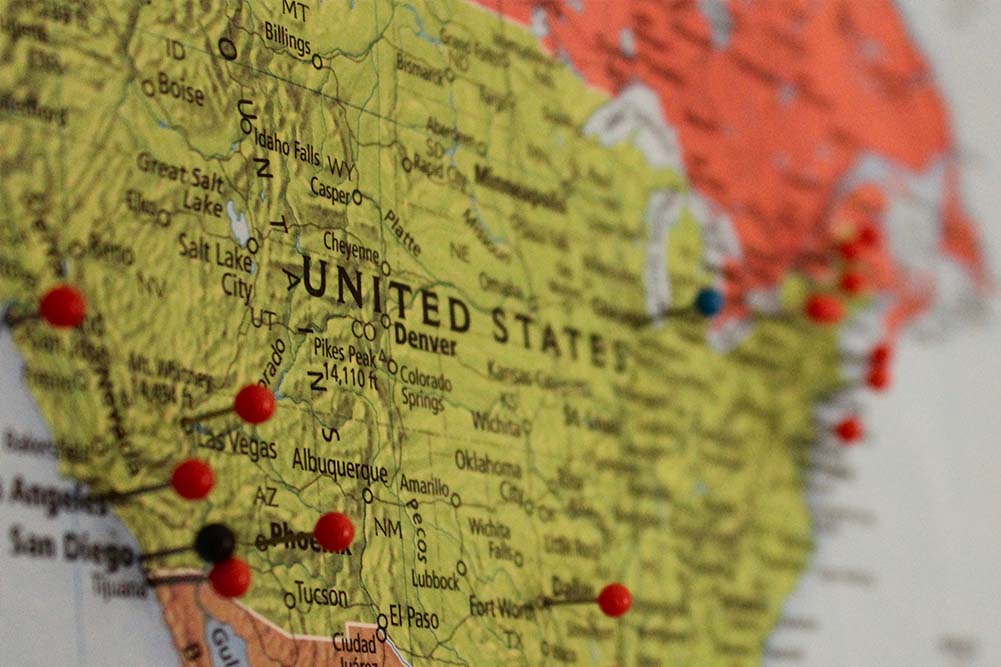Your Cart is Empty
February 08, 2022 3 min read

It should come as no surprise that tap water contains a variety of pollutants, as it results from unfiltered water supplies streamed from groundwater, lakes, or rivers. However, it still comes as a surprise to many Americans that radiological water contaminants, including uranium and radium, are present in the tap water being consumed by households every day. In fact, more than half of Americans are unknowingly drinking tap water contaminated with radiological pollutants.
Many of these pollutants occur in nature, rubbing off from rocks and seeping into groundwater supplies. Others are man-made and are being released (intentionally or accidentally) from nuclear power plants, medical facilities, and mining industries into the environment, eventually finding their way into underground water storage. Radiological pollutants, even if consumed in small doses, lead to increased risk of cancer, kidney failure, birth defects, and cell mutation in children. No area of the United States is completely free of these contaminants, but California, Colorado, Texas, and the New England area face unusually high risks of radiological contaminants in their water.
For example, Cape Cod, Massachusetts is currently under threat of nearly one million gallons of contaminated water being dumped into its bay. A closed power plant in Plymouth needs to dump its stored waste, and legally they are allowed to dump radioactive water into the Cape Cod Bay. According to the Clean Water Act, it is illegal to discharge “common water pollutants” in the bay, but radioactive chemicals are not included in the definition of pollutants. This allows nuclear companies to willingly pollute the water that will enter households of individuals and families across New England.
While some areas are affected by man-made radiologicals, others face the inevitable challenge of naturally-occuring radiologicals entering their water supply. Southeastern Colorado holds the record for housing six out of the ten cities with the worst radium levels in the nation. For over twenty years, these communities were aware of the extremely high levels of radium in their tap water, but lack of funds to filter the water leave residents with no choice. Already poor communities attempt to install reverse osmosis filtration systems, but they have no way of paying for them without increasing rent on the property. The contamination continues unhindered in these rural communities.
Since large-scale change in filtering radiologically polluted water has yet to occur in most of the country, risk of cancer and kidney disease continues to increase through the consumption of contaminated tap water. Instead of waiting around for an expensive infrastructure change, individuals can do their part to protect themselves from radiological contaminants. Seychelle Radiological filters are independently lab tested to remove gross beta, alpha radium 226, cesium 137 & 134, uranium and radon 222. By investing in a Seychelle water filter, tap water pollutants will be nowhere near you or your family.
What are radiological water contaminants?
Radiological contaminants, or radionuclides, are undesirable radioactive substances that find their way into a water supply. They can be found in nature or produced in nuclear and medical facilities.
Are radiological contaminants harmful?
Yes. While different contaminants have different effects on the human body, contaminants like radon and uranium are associated with kidney damage and liver cancer, among other health defects.
Who is affected by radiological contaminants?
Over half of the United States is affected by these contaminants, most unknowingly. California, Colorado, Texas, and New England currently face the most threat.
How can I protect myself from consuming radionuclides?
While there is no doubt the chemicals are present in tap water, they can be safely filtered out. Seychelle water filters allow peace of mind knowing that these contaminants can be stopped from being consumed.
Barnes, Jennette. “1M gallons of radioactive water from Plymouth nuclear plant could be discharged into Cape Cod Bay.”Cape and Islands, 23 November 2021,https://www.capeandislands.org/local-news/2021-11-23/1m-gallons-of-radioactive-water-from-plymouth-nuclear-plant-could-be-discharged-into-cape-cod-bay. Accessed 3 February 2022.
Commander, Anna. “Report: More than half of all Americans could be drinking contaminated tap water.”CBS 12 News, 11 January 2018,https://cbs12.com/news/local/more-than-half-of-americans-could-be-drinking-contaminated-tap-water. Accessed 3 February 2022.
NMCL Employee, “A Look at Radiological Water Contaminants.”Berkey Water, 19 June 2017,https://www.berkeywater.com/news/a-look-at-radiological-water-contaminants/. Accessed 3 February 2022.
“Uranium in Drinking Water.”Water Quality Association, 2022, https://www.wqa.org/Learn-About-Water/Common-Contaminants/Uranium. Accessed 3 February 2022.
Wyloge, Evan. “Some Coloradan’s drinking water still worst in the U.S. – and it’s a health risk.”The Gazette, 11 January 2022,https://gazette.com/colorado-watch/colorado-radium-levels-in-drinking-tap-water-highest-in-nation/article_49153342-4cdd-11ec-8b2b-83d65f766d5c.html. Accessed 3 February 2022.
“170 Million in U.S. Drink Radioactive Tap Water.”Environmental Working Group, 11 January 2018,https://www.ewg.org/research/170-million-us-drink-radioactive-tap-water#:~:text=California%20has%20the%20most%20residents,has%20the%20most%20widespread%20contamination.. Accessed 3 February 2022.